Intermittent drug techniques for schizophrenia
- PMID: 23881657
- PMCID: PMC11569889
- DOI: 10.1002/14651858.CD006196.pub2
Intermittent drug techniques for schizophrenia
Abstract
Background: Antipsychotic medication is considered the mainstay of treatment for schizophrenia and is generally regarded as highly effective, especially in controlling positive symptoms. However, long-term antipsychotic exposure has been associated with a range of adverse effects, including extra-pyramidal symptoms (EPS), neuroleptic malignant syndrome (NMS), tardive dyskinesia and death. Intermittent drug techniques refers to the 'use of medication only during periods of incipient relapse or symptom exacerbation rather than continuously'. The aim is to reduce the risk of typical adverse effects of antipsychotics by 'reducing long-term medication exposure for patients who are receiving maintenance treatment while limiting the risk of relapse', with a further goal of improving social functioning resulting from the reduction of antipsychotic-induced side effects
Objectives: To review the effects of different intermittent drug techniques compared with maintenance treatment in people with schizophrenia or related disorders.
Search methods: We searched The Cochrane Schizophrenia Group Trials Register (April 2012) and supplemented this by contacting relevant study authors, handsearching relevant intermittent drug treatment articles and manually searching reference lists.
Selection criteria: All randomised controlled trials (RCTs) that compared intermittent drug techniques with standard maintenance therapy for people with schizophrenia. Primary outcomes of interest were relapse and hospitalisation.
Data collection and analysis: At least two review authors selected trials, assessed quality and extracted data. We calculated risk ratios (RR) and 95% confidence intervals (CI) of homogeneous dichotomous data and estimated the 95% confidence interval (CI) around this. For non-skewed continuous endpoint data extracted from valid scales, we estimated mean difference (MD) between groups with a 95% CI. Where data displayed heterogeneity, these were analysed using a random-effects model. Skewed data are presented in tables. We assessed overall quality for clinically important outcomes using the GRADE approach.
Main results: Of 241 records retrieved by the search, 17 trials conducted between 1961 and 2011, involving 2252 participants with follow-up from six weeks to two years, were included. Homogenous data demonstrated that instances of relapse were significantly higher in people receiving any intermittent drug treatment in the long term (n = 436, 7 RCTs, RR 2.46, 95% CI 1.70 to 3.54, moderate quality evidence). Intermittent treatment was shown to be more effective than placebo, however, and demonstrated that significantly less people receiving intermittent antipsychotics experienced full relapse by medium term (n = 290, 2 RCTs, RR 0.37, 95% CI 0.24 to 0.58, very low quality evidence). Hospitalisation rates were higher for people receiving any intermittent drug treatment by long term (n = 626, 5 RCTs, RR 1.65, 95% CI 1.33 to 2.06, moderate quality evidence). Results demonstrated little difference in instances of tardive dyskinesia in groups with any intermittent drug technique versus maintenance therapy, with equivocal results (displaying slight heterogeneity) at long term (n = 165, 4 RCTs, RR 1.15, 95% CI 0.58 to 2.30, low quality evidence).
Authors' conclusions: Results of this review support the existing evidence that intermittent antipsychotic treatment is not as effective as continuous, maintained antipsychotic therapy in preventing relapse in people with schizophrenia. More research is needed to assess any potential benefits or harm of intermittent treatment regarding adverse effects typically associated with maintained antipsychotic treatment, as well as any cost-effectiveness of this experimental treatment.
Conflict of interest statement
Stephanie Sampson ‐ none known.
Clive Elliot Adams ‐ none known.
Mouhamad Mansour ‐ none known.
Karla Soares‐Weiser ‐ I currently work for Enhance Reviews Ltd, a company that carries out systematic reviews mostly for the public sector, we currently do not provide services for the pharmaceutical industry.
Nicola Maayan ‐ I currently work for Enhance Reviews Ltd, a company that carries out systematic reviews mostly for the public sector, we currently do not provide services for the pharmaceutical industry.
Figures
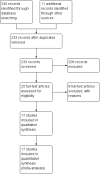

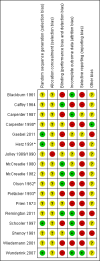
















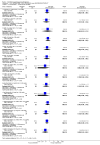














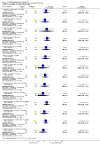




























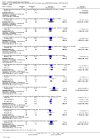

Update of
- doi: 10.1002/14651858.CD006196
References
References to studies included in this review
Blackburn 1961 {published data only}
-
- Blackburn HL, Allen JL. Behavioural effects on interrupting and resuming tranquillizing medication among schizophrenics. Journal of Nervous and Mental Disease 1961;133(4):303‐8. - PubMed
Caffey 1964 {published data only}
-
- Caffey EM, Diamond LS, Frank TV, Grasberger JC, Herman L, Klett CJ, et al. Discontinuation or reduction of chemotherapy in chronic schizophrenics. Journal of Chronic Diseases 1964;17(4):347‐58. - PubMed
Carpenter 1987 {published data only}
-
- Carpenter WT, Heinrichs DW. Early intervention, time limited, targeted pharmacotherapy of schizophrenia. Schizophrenia Bulletin 1983;9(4):533‐42. - PubMed
-
- Carpenter WT, Heinrichs DW, Hanlon TE. A comparative trial of pharmacologic strategies in schizophrenia. American Journal of Psychiatry 1987;144(11):1466‐70. - PubMed
Carpenter 1990* {published data only}
-
- Carpenter WT, Hanlon TE, Heinrichs DW, Summerfelt A, Kirkpatrick B, Levine J, et al. Continuous vs. targeted medication in schizophrenic outpatients: Outcome results. American Journal of Psychiatry 1990;147:1138‐48. - PubMed
-
- Carpenter WT, Stephens JH, Rey AC, Hanlon TE, Heinrichs DW. Early intervention vs continuous pharmacotherapy of schizophrenia. Psychopharmacology Bulletin 1982;18(1):21‐3.
Gaebel 2011 {published data only}
-
- Gaebel W, Möller HJ, Buchkremer G, Ohmann C, Riesbeck M, Wölwer W, et al. Pharmacological long‐term treatment strategies in first episode schizophrenia: study design and preliminary results of an ongoing RCT within the German Research Network on Schizophrenia. European Archives of Psychiatry and Clinical Neuroscience 2004;254:129‐40. [DOI: 10.1007/s00406-004-0509-y] - DOI - PubMed
-
- Gaebel W, Riesbeck M, Wölwer W, Klimke A, Eickhoff M, Wilmsdorff M, et al. Maintenance treatment with risperidone or low‐dose haloperidol in first‐episode schizophrenia: 1‐year results of a randomised controlled trial within the German Research Network on Schizophrenia. The Journal of Clinical Psychiatry 2007;68(11):1763‐74. - PubMed
-
- Gaebel W, Riesbeck M, Wölwer W, Klimke A, Eickhoff M, Wilmsdorff M, et al. Relapse prevention in first‐episode schizophrenia ‐ maintenance vs intermittent drug treatment with prodrome‐based early intervention: results of a randomised controlled trial within the German Research Network on Schizophrenia. Journal of Clinical Psychiatry February 2011;72(2):205‐18. - PubMed
-
- Möller HJ, Riedel M, Jäger M, Wickelmaier F, Maier W, Kühn KU, et al. Short‐term treatment with risperidone or haloperidol in first‐episode schizophrenia: 8‐week results of a randomized controlled trial within the German Research Network on Schizophrenia. International Journal of Neuropsychopharmacology 2008;11(7):985‐97. - PubMed
Herz 1991* {published data only}
-
- Herz MI, Glazer W. Intermittent medication in schizophrenia ‐ preliminary results. Schizophrenia Research 1988;1(2,3):224‐5.
-
- Herz MI, Glazer W, Mirza M, Mostert M, Hafez H, Smith P, et al. Intermittent medication in schizophrenia: a preliminary report. In: Schulz SC, Tamminga CA editor(s). Schizophrenia: Scientific Progress. New York, USA: Oxford University Press, 1989:333‐40.
-
- Herz MI, Glazer WM, Mostert MA, Sheard MA, Szymanski HV, Hafez H, et al. Intermittent vs maintenance medication in schizophrenia. Two‐year results. Archives of General Psychiatry 1991;48(4):333‐9. [MEDLINE: ] - PubMed
-
- Herz MI, Szymanski HV, Simon JC. Intermittent medication for stable schizophrenic outpatients: an alternative to maintenance medication. American Journal of Psychiatry 1982;139:918‐22. [MEDLINE: ] - PubMed
Jolley 1989/1990 {published data only}
-
- Hirsch SR, Jolley AG, Manchanda R, McRink A. Intermittent medication as an alternative to maintenance medication in the treatment of schizophrenia: a preliminary report [Fruehzeitige medikamentoese Intervention als Alternative zur Depot‐Dauer‐Medikation in der Schizophreniebehandlung Ein vorlaeufiger Bericht]. In: Boeker W, Brenner HD editor(s). Bewaltigung der Schizophrenie. Bern, Switzerland: Verlag Hans Huber, 1986:62‐71.
-
- Jolley AG, Hirsch SR. Intermittent and low‐dosage neuroleptic treatment: preventive strategies in schizophrenia [Intermittierende und niedrigdosierte Neuroleptika‐Therapie: Prophylaktische Strategien bei der Schizophrenie]. Therapie der Schizophrenie. UK: Kohlhammer, 1990:53‐63.
McCreadie 1980 {published data only}
-
- McCreadie RG, Dingwall JM, Wiles DH, Heykants JJ. Intermittent pimozide versus fluphenazine decanoate as maintenance therapy in chronic schizophrenia. British Journal of Psychiatry 1980;137:510‐7. [MEDLINE: ] - PubMed
McCreadie 1982 {published data only}
-
- McCreadie R, Mackie D, Morrison D, Kidd J. Once weekly pimozide versus fluphenazine decanoate as maintenance therapy in chronic schizophrenia. British Journal of Psyhciatry 1982;140:280‐6. - PubMed
Olson 1962* {published data only}
-
- Olson GW, Peterson DB. Intermittent chemotherapy for chronic psychiatric inpatients. Journal of Nervous and Mental Disease February 1962;134:145‐9. [PUBMED: 14481933] - PubMed
Pietzcker 1993* {published data only}
-
- Bandelow B, Müller P, Frick U, Gaebel W, Linden M, Müller‐Spahn F, et al. Depressive syndromes in schizophrenic patients under neuroleptic therapy. European Archives of Psychiatry and Clinical Neuroscience 1992;241(5):291‐5. [MEDLINE: ] - PubMed
-
- Gaebel W. Predictors of response to different neuroleptic long‐term treatment strategies in schizophrenia. Schizophrenia Research 1995;15(1,2):150. [MEDLINE: ]
-
- Gaebel W, Frick U, Köpcke W, Linden M, Müller P, Müller‐Spahn F, et al. Early neuroleptic intervention in schizophrenia: are prodromal symptoms valid predictors of relapse?. British Journal of Psychiatry Supplementum 1993;163(Suppl 21):8‐12. [MEDLINE: ] - PubMed
-
- Gaebel W, Janner M, Frommann N, Pietzcker A, Köpcke W, Linden M, et al. First vs multiple episode schizophrenia: two‐year outcome of intermittent and maintenance medication strategies. Schizophrenia Research 2002;53:145‐59. - PubMed
Prien 1973 {published data only}
-
- Prien RF, Gillis RD, Caffey EM Jr. Intermittent pharmacotherapy in chronic schizophrenia. Hospital and Community Psychiatry 1973;24(5):317‐22. [MEDLINE: ] - PubMed
Remington 2011 {published data only}
-
- Remington G, Seeman P, Feingold A, Mann S, Shammi C, Kapur S. "Extended" antipsychotic dosing in the maintenance treatment of schizophrenia: a double‐blind, placebo‐controlled trial. Journal of Clinical Psychiatry August 2011;72(8):1042‐8. - PubMed
-
- Remington G, Seeman P, Shammi C, Mann S, Kapur S. "Extended" antipsychotic dosing: rationale and pilot data. Journal of Clinical Psychopharmacology 2005;25(6):611‐3. - PubMed
Schooler 1997 {published data only}
-
- Schooler NR, Keith SJ, Severe JB, Matthews SM, Bellack AS, Glick ID, et al. Relapse and rehospitalisation during maintenance treatment of schizophrenia. Archives of General Psychology 1997;54:453‐63. - PubMed
Shenoy 1981 {published data only}
-
- Goldberg SC, Shenoy RS, Sadler A, Hamer R, Ross B. The effects of a drug holiday on relapse and tardive dyskinesia in chronic schizophrenics. Psychopharmacology Bulletin 1981;17(1):116‐7. - PubMed
-
- Shenoy RS, Sadler AG, Goldberg SC, Hamer RM, Ross B. Effects of a six‐week drug holiday on symptom status, relapse, and tardive dyskinesia in chronic schizophrenics. Journal of Clinical Psychopharmacology 1981;1(3):141‐5. [MEDLINE: ] - PubMed
Wiedemann 2001 {published data only}
-
- Wiedemann G, Hahlweg K, Müller U, Feinstein E, Hank G, Dose M. Effectiveness of targeted intervention and maintenance pharmacotherapy in conjunction with family intervention in schizophrenia. European Archives of Psychiatry and Clinical Neuroscience 2001;251:72‐84. - PubMed
Wunderink 2007 {published data only}
-
- Wunderink L, Nienhuis FJ, Sytema S, Slooff CJ, Knegtering R, Wiersma D. Guided discontinuation versus maintenance treatment in remitted first‐episode psychosis: relapse rates and functional outcome. Journal of Clinical Psychiatry May 2007;68(5):654‐61. - PubMed
References to studies excluded from this review
Caffey 1975 {published data only}
-
- Caffey EM, Prien RF. Practical considerations on treatment with antipsychotic preparations [Prakticheskie soobrazheniia o lechenii antipsikhoticheskimi preparatami]. Zhurnal Nevropatologii i Psikhiatrii Imeni S. S. Korsakova 1975;75(9):1399‐401. [MEDLINE: ] - PubMed
Docherty 2003 {published data only}
-
- Docherty JP, Grogg AL, Pharm D, Kozma C, Lasser R. Antipsychotic maintenance in schizophrenia: partial compliance and clinical outcome. Presented at the International Congress on Schizophrenia Research Biennial Meeting. Colorado Springs, Colorado, US, March 29‐April 2, 2003.
Engelhart 2002 {published data only}
-
- Engelhart LM, Janagap C, White RE. The implications of antipsychotic treatment patterns on health outcomes in schizophrenia. Proceedings of the 155th Annual Meeting of the American Psychiatric Association; 2002 May 18‐23; Philadelphia, Pennsylvania, USA. 2002.
-
- Engelhart LM, Janagap C, White RE, Rothman M. The implications of antipsychotic treatment patterns on health outcomes in schizophrenia. Proceedings of the 153rd Annual Meeting of the American Psychiatric Association; 2000 May 13‐18; Chicago, Illinois, USA. 2000.
Hymowitz 1980 {published data only}
-
- Hymowitz P, Spohn H. The effects of antipsychotic medication on the linguistic ability of schizophrenics. Journal of Nervous and Mental Disease 1980;168(5):287‐96. - PubMed
Levine 1980 {published data only}
-
- Levine J, Schooler N, Severe J, Escobar J, Gelenberg A, Mandel M, et al. Discontinuation of oral and depot fluphenazine in schizophrenic patients after one year of continuous medication: a controlled study. Advances in Biochemical Psychopharmacology 1980;24:483‐93. - PubMed
Newton 1989 {published data only}
-
- Newton JE, Cannon DJ, Couch L, Fody EP, McMillan DE, Metzer WS, et al. Effects of repeated drug holidays on serum haloperidol concentrations, psychiatric symptoms, and movement disorders in schizophrenic patients. Journal of Clinical Psychiatry 1989;50(4):132‐5. - PubMed
Strauss 1990 {published data only}
-
- Strauss WH, Tegeler J, Luthcke H. Cognitive functions in schizophrenic patients under long‐term neuroleptic therapy. Proceedings of the 17th Collegium Internationale Neuro‐Psychopharmacologicum Congress; 1990 Sep 10‐14; Kyoto, Japan. 1990:304.
Uchida 2008 {published data only}
-
- Uchida H, Mamo DC, Kapur S, Labelle A, Shammi C, Mannaert EJ, et al. Monthly administration of long‐acting injectable risperidone and striatal dopamine D2 receptor occupancy for the management of schizophrenia. Journal of Clinical Psychiatry 2008;69(8):1281‐6. [PUBMED: 18642974] - PubMed
References to ongoing studies
Uchida 2013 {published data only}
-
- Uchida H. D2 Receptor Blockade and Remission in Schizophrenia. UMIN‐CTR Clinical Trial Registry, trial number UMIN000006011.
Additional references
Altman 1996
Andreasen 1982
-
- Andreasen NC. Negative symptoms in schizophrenia: definition and reliability. Archives of General Psychiatry 1982;39(7):784‐8. - PubMed
APA 1980
-
- American Psychiatric Association. Diagnostic and Statistical Manual of Mental Disorders. Vol. 3, Washington DC: American Psychiatric Association, 1980.
APA 1994
-
- American Psychiatric Association. Diagnostic and Statistical Manual of Mental Disorders. Vol. 4, Washington DC: American Psychiatric Association, 1994.
Baldessarini 1988
-
- Baldessarini RJ, Cohen BM, Teicher MH. Significance of neuroleptic dose and plasma level in the pharmacological treatment of psychosis. Archives of General Psychiatry 1988;45:79‐91. - PubMed
Barbui 1996
-
- Barbui C, Saraceno B, Liberati A, Garattini S. Low‐dose neuroleptic therapy and relapse in schizophrenia: meta‐analysis of randomised controlled trials. European Psychiatry 1996;11:306‐13. - PubMed
Bland 1997
Bleuler 1908
-
- Bleuler E. The prognosis of dementia praecox ‐ schizophrenia group [Die Prognose der Dementia Praecox ‐ Schizophreniegruppe]. Allgemeine Zeitschrift fur Psychiatrie 1908;65:436‐64.
Boissel 1999
-
- Boissel JP, Cucherat M, Li W, Chatellier G, Gueyffier F, Buyse M, et al. The problem of therapeutic efficacy indices. 3. Comparison of the indices and their use. Therapie 1999;54(4):405‐11. - PubMed
Borison 1998
-
- Borison RL, Diamond BI, Sinha D, Gupta RP, Prince Ajiboye PA. Clozapine withdrawal rebound psychosis. Psychopharmacology Bulletin 1998;24:260‐3. - PubMed
Carpenter 1983
-
- Carpenter WT, Heinrichs DW. Early intervention, time limited, targeted pharmacotherapy of schizophrenia. Schizophrenia Bulletin 1983;9(4):533‐42. - PubMed
Carpenter 1994
-
- Carpenter WT Jr, Buchanan RW. Schizophrenia. New England Journal of Medicine 1994;330:681‐90. - PubMed
Csernansky 2002
-
- Csernansky JG, Mahmoud R, Brenner R. A comparison of risperidone and haloperidol for the prevention of relapse in patients with schizophrenia. New England Journal of Medicine 2002;346:16‐22. - PubMed
Curson 1985
-
- Curson DA, Barnes TRE, Bamber RW, Platt SD, Hirsch SR, Duffy JC. Long term depot maintenance of chronic schizophrenic out‐patients: the seven‐year follow‐up of the Medical Reseach Council fluphenazine/placebo trial. British Journal of Psychiatry 1985;146:464‐80. - PubMed
Davis 1976
-
- Davis JM. Recent developments in the drug treatment of schizophrenia. American Journal of Psychiatry 1976;133:208‐14. - PubMed
Day 1995
-
- Day JC, Wood G, Dewey M, Bentall RP. A self‐rating scale for measuring neuroleptic side‐effects: validation in a group of schizophrenic patients. British Journal of Psychiatry 1995;166:650‐3. - PubMed
Deeks 2000
-
- Deeks J. Issues in the selection for meta‐analyses of binary data. Proceedings of the 8th International Cochrane Colloquium; 2000 Oct 25‐28; Cape Town. Cape Town: The Cochrane Collaboration, 2000.
Dencker 1980
-
- Dencker SJ, Lepp M, Malm U. Clopenthixol and flupenthixol depot preparations in outpatient schizophrenics. Acta Psychiatrica Scandinavica Supplementum 1980;279:10‐28. - PubMed
Divine 1992
-
- Divine GW, Brown JT, Frazer LM. The unit of analysis error in studies about physicians' patient care behavior. Journal of General Internal Medicine 1992;7:623‐9. - PubMed
Donner 2002
-
- Donner A, Klar N. Issues in the meta‐analysis of cluster randomized trials. Statistics in Medicine 2002;21:2971‐80. - PubMed
Egger 1997
Elbourne 2002
-
- Elbourne D, Altman DG, Higgins JPT, Curtina F, Worthingtond HV, Vaile A. Meta‐analyses involving cross‐over trials: methodological issues. International Journal of Epidemiology 2002;31(1):140‐9. - PubMed
Endicott 1976
-
- Endicott J, Spitzer RL, Fleiss JL, Cohen J. The Global Assessment Scale; A procedure for measuring overall severity of psychiatric disturbance. Archives of General Psychiatry 1976;33:766‐71. - PubMed
Feighner 1972
-
- Feighner JP, Robins E, Guze SB, Woodruff RA, Winokur G, Munos R. Diagnostic criteria for the use in psychiatric research. Archives of General Psychiatry 1972;26:57‐63. - PubMed
Fleischhacker 1989
-
- Fleischhacker WW, Bergmann KJ, Perovich R, Pestreich LK, Borenstein M, Lieberman JA, et al. The Hillside Akathisia Scale: a new rating instrument for neuroleptic‐induced akathisia. Psychopharmacological Bulletin 1989;25(2):222‐6. - PubMed
Furukawa 2006
-
- Furukawa TA, Barbui C, Cipriani A, Brambilla P, Watanabe N. Imputing missing standard deviations in meta‐analyses can provide accurate results. Journal of Clinical Epidemiology 2006;59:7‐10. - PubMed
Gaebel 2002
-
- Gaebel W, Janner M, Frommann N, Pietzcker A, Köpcke W, Linden M, et al. First vs multiple episode schizophrenia: two‐year outcome of intermittent and maintenance medication strategies. Schizophrenia Research 2002;53:145‐59. - PubMed
Gardos 1976
-
- Gardos G, Cole J. Maintenance antipsychotic therapy: is the cure worse than the disease?. American Journal of Psychiatry 1976;133(1):32‐6. - PubMed
Gilbert 1995
-
- Gilbert PL, Harris J, McAdam LA, Jeste DV. Neuroleptic withdrawal in schizophrenic patients ‐ a review of the literature. Archives of General Psychiatry 1995;52:173‐88. - PubMed
Gilbody 2002
-
- Gilbody S, House A, Sheldon T. Psychiatrists in the UK do not use outcomes measures: National Survey. British Journal of Psychiatry 2002;180:101‐3. - PubMed
Gulliford 1999
-
- Gulliford MC, Ukoumunne OC, Chinn S. Components of variance and intraclass correlations for the design of community‐based surveys and intervention studies: data from the Health Survey for England 1994. American Journal of Epidemiology 1999;149:876‐83. - PubMed
Guy 1970
-
- Guy W, Bonato RR. Clinical Global Impressions. Manual for the ECDEU Assessment Battery. Vol. 2. Rev, National Institute of Mental Health, 1970:212‐222.
Guy 1976
-
- Guy U. ECDEU Assessment Manual for Psychopharmacology. Revised. Rockville: National Institute of Mental Health, 1976.
Haddad 2008
Hawk 1975
-
- Hawk AB, Carpenter WT, Strauss JS. Diagnostic criteria and five‐year outcome in schizophrenia: a report from the International Pilot Study of Schizophrenia. Archives of General Psychiatry 1975;32:343‐7. - PubMed
Heinrichs 1984
-
- Heinrichs DW, Hanlon TE, Carpenter WT. The Quality of Life Scale: an instrument for rating the schizophrenic deficit syndrome. Schizophrenia Bulletin 1984;10:388‐98. - PubMed
Herz 1980
-
- Herz MI, Melville C. Relapse in schizophrenia. American Journal of Psychiatry 1980;137:801‐5. - PubMed
Higgins 2003
Higgins 2005
-
- Higgins JPT, Green S, editors. Cochrane Handbook for Systematic Reviews of Interventions 5.0.1 [updated September 2008]. Availabel from www.cochrane‐handbook.org. Chichester, UK: John Wiley & Sons, Ltd, 2008.
Higgins 2011
-
- Higgins JPT, Green S (editors). Cochrane Handbook for Systematic Reviews of Interventions Version 5.0.2. The Cochrane Collaboration 2011; Vol. Available from www.cochrane‐handbook.org.
Hutton 2009
-
- Hutton Jane L. Number needed to treat and number needed to harm are not the best way to report and assess the results of randomised clinical trials. British Journal of Haematology 2009;146(1):27‐30. - PubMed
ICD‐10
-
- World Health Organization. The ICD‐10 Classification of Mental and Behavioural Disorders. Geneva: WHO, 1992.
Jablensky 1992
-
- Jablensky A, Sartorius N, Ernberg G, Anker M, Korten A, Cooper JE, et al. Schizophrenia: manifestations, incidence and course indifferent cultures. A World Health Organization ten‐country study. Psychological Medicine (Monograph Supplement) 1992;20:1‐97. - PubMed
Jadad 1996
-
- Jadad A, Moore A, Carroll D, Jenkinson C, Reynolds DJM, Gavaghan DJ, McQuay HJ. Assessing the quality of reports of randomized clinical trials: is blinding necessary?. Controlled Clinical Trials 1996;17:1‐12. - PubMed
Johnstone 1998
-
- Johnstone EC. Psychiatry, its history and boundaries. In: Johnstone EC, Freeman CPL, Zealley AK editor(s). Companion to Psychiatric Studies. Edinburgh: Churchill Livingstone, 1998:1‐10.
Kane 1998
-
- Kane JM, Aguglia E, Carlo Altamura A, Guiterrez JLA, Brunello N, Fleischhacker WW, et al. Guidelines for depot antipsychotic treatment in schizophrenia. European Neuropsychopharmacology 1998;8:55‐66. - PubMed
Kay 1986
-
- Kay SR, Opler LA, Fiszbein A. Positive and Negative Syndrome Scale (PANSS) Manual. North Tonawanda (NY): Multi‐Health Systems, 1986.
Kay 1987
-
- Kay SR, Fiszbein A, Opler LA. The positive and negative syndrome scale (PANSS) for schizophrenia. Schizophrenia Bulletin 1987;13(2):261‐76. - PubMed
Klein 1969
-
- Klein D, Davis JM. Diagnosis and Drug Treatment of Psychiatric Disorders. Baltimore, MD: Williams and Wilkins, 1969.
Kraepelin 1896
-
- Kraepelin E. Textbook of Psychiatry [Lehrbuch der Psychiatrie]. Psychiatrie. Vol. 5, Erlangen: Ferdinand Enke, 1896.
Lambert 2003
-
- Lambert TJ, Cock N, Alcock SJ, Kelly DL, Conley RR. Measurement of antipsychotic‐induced side‐effects: support for the validity of a self‐report (LUNSERS) versus structured interview (UKU) approach to measurement. Human Psychopharmacology 2003;18(5):405‐11. - PubMed
Leff 1971
Leucht 2005a
-
- Leucht S, Kane JM, Kissling W, Hamann J, Etschel E, Engel R. Clinical implications of Brief Psychiatric Rating Scale Scores. British Journal of Psychiatry 2005;187:366‐71. - PubMed
Leucht 2005b
-
- Leucht S, Kane JM, Kissling W, Hamann J, Etschel E, Engel RR. What does the PANSS mean?. Schizophrenia Research 2005;79(2‐3):231‐8. [PUBMED: 15982856] - PubMed
Leucht 2007
Lieberman 2005
-
- Lieberman JA, Stroup TS, McEvoy JP, Swartz MS, Rosenheck RA, Perkins DO, et al. Effectiveness of antipsychotic drugs in patients with chronic schizophrenia. New England Journal of Medicine 2005;353:1209‐23. - PubMed
Marder 2003
-
- Marder SR, Wirshing DA. Maintenance treatment. In: Hirsch SR, Weinberger DR editor(s). Schizophrenia. 2nd Edition. Oxford: Blackwell, 2003.
Marshall 2000
-
- Marshall M, Lockwood A, Adams C, Bradley C, Joy C, Fenton M. Unpublished rating scales ‐ a major source of bias in randomised controlled trials of treatments for schizophrenia?. British Journal of Psychiatry 2000;176:249‐52. - PubMed
Moher 2001
-
- Moher D, Schulz KF, Altman D. The CONSORT statement: revised recommendations for improving the quality of reports of parallel‐group randomized trials. JAMA 2001;285(12):1987‐91. - PubMed
Morken 2008
Neuchterlein 1986
-
- Neuchterlein KH, Snyder KS, Dawson ME, Rappe S, Gitlin M, Fogelson D. Expressed emotion, fixed dose fluphenazine decanoate maintenance and relapse in recent onset schizophrenia. Psychopharamacology Bulletin 1986;22:633‐9. - PubMed
NICE 2010
-
- The NICE guideline on core interventions in the treatment and management of schizophrenia in adults in primary and secondary care. National Clinical Guideline: 82. Updated edition. London, Leicester: The British Psychological Society and The Royal College of Psychiatrists, British Library, Stanley Hunt, 2010.
Nose 2003
-
- Nose M, Barbui C, Tansella M. How often do patients with psychosis fail to adhere to treatment programmes? A systematic review. Psychological Medicine 2003;33:1149‐60. - PubMed
O'Carroll 2000
-
- O'Carroll RE, Smith K, Couston M, Cossar JA, Hayes PC. A comparison of the WHOQOL‐100 and the WHOQOL‐BREF in detecting change in quality of life following liver transplantation. Quality of Life Research 2000;9(1):121‐4. - PubMed
Oliver 1991
-
- Oliver J. The social care directive: development of a quality of life profile for use in community services for the mentally ill. Social Work and Social Sciences Review 1991;3:5‐45.
Overall 1962
-
- Overall JE, Gorham DR. The Brief Psychiatric Rating Scale. Psychological Reports 1962;10:799‐812.
Perkins 2002
-
- Perkins DO. Predictors of noncompliance in patients with schizophrenia. Journal of Clinical Psychiatry 2002;63:1121‐8. - PubMed
Prudo 1987
-
- Prudo R, Blum HM. Five‐year outcome and prognosis in schizophrenia. British Journal of Psychiatry 1987;150:345‐54. - PubMed
Ray 2009
RDC criteria 1978
-
- Spitzer RL, Endicott J, Robins E. Research Diagnostic Criteria (RDC) for a selected group of functional disorders. Biometrics Research. New York State Psychiatric Institute, 1978:0‐33.
Schooler 1993
-
- Schooler NR, Keith SJ. The clinical research base for the treatment of schizophrenia. Psychopharmacology Bulletin 1993;29:431‐46. - PubMed
Schooler 2004
-
- Schooler N. Maintenance medication for schizophrenia: strategies for dose reduction. FOCUS Winter 2004;2(1):175‐86. - PubMed
Schulz 1995
-
- Schulz KF, Chalmers I, Hayes RJ, Altman DG. Empirical evidence of bias: dimensions of methodological quality associated with estimates of treatment effects in controlled trials. JAMA 1995;273:408‐12. - PubMed
Schünemann 2008
-
- Schünemann HJ, Oxman AD, Vist GE, Higgins JPT, Deeks JJ, Glasziou P, et al. Chapter 12: Interpreting results and drawing conclusions. In: Higgins JPT, Green S editor(s). Cochrane Handbook for Systematic Reviews of Interventions. The Cochrane Collaboration, 2008:359‐83.
Simpson 1970
-
- Simpson GM, Angus JWS. A rating scale for extrapyramidal side effects. Acta Psychiatrica et Neurologica Scandinavica, Supplementum 1970;212:11‐9. - PubMed
Spitzer 1971
-
- Spitzer RL, Endicott J. An integrated group of forms for automated psychiatric case records: a progress report. Archives of General Psychiatry 1971;24:448‐53. - PubMed
Thornley 1998
TREC‐Rio‐I
TREC‐Vellore‐I
-
- Alexander J, Tharyan P, Adams CE, John T, Mol C, Philip J. Rapid tranquillisation of violent or agitated patients in a psychiatric emergency setting: a pragmatic randomised trial of intramuscular lorazepam versus haloperidol plus promethazine. British Journal of Psychiatry 2004;185:63‐9. - PubMed
Ukoumunne 1999
-
- Ukoumunne OC, Gulliford MC, Chinn S, Sterne JAC, Burney PGJ. Methods for evaluating area‐wide and organisation‐based interventions in health and health care: a systematic review. Health Technology Assessment 1999;3(5):iii‐92. - PubMed
UKU 1987
-
- Scandinavian Society of Psychopharmacology Committee of Clinical Investigations. The UKU side‐effect rating scale: scale for the registration of unwanted effects of psychotropics. Acta Psychiatrica Scandinavica 1987;76(suppl):81‐94.
van Nieuwenhuizen 2001
-
- Nieuwenhuizen C, Schene AH, Koeter MWJ, Huxley PJ. The Lancashire Quality of Life Profile: modification and psychometric evaluation. Social Psychiatry and Psychiatric Epidemiology 2001;36:36‐44. - PubMed
Weissman 1976
-
- Weissman MM, Bothwell S. Assessment of Social Adjustment by patient self‐report. Archives of General Psychiatry 1976;33(9):1111‐5. - PubMed
WHO 2009
-
- World Health Organisation. Pharmacological treatment of mental health disorders in primary health care. http://whqlibdoc.who.int/publications/2009/9789241547697_eng.pdf 2009:9‐18. - PubMed
Wiersma 1990
-
- Wiersma D, Jong A, Kraaijkamp HJM, et al. The Groningen Social Disabilities Schedule, second version. The Groningen Social Disabilities Schedule, second version. Groningen, Netherlands: Department of Psychiatry, Rijksuniversiteit Groningen, 1990.
Xia 2009
-
- Xia J, Adams CE, Bhagat N, Bhagat V, Bhoopathi P, El‐Sayeh H, et al. Loss to outcomes stakeholder survey: the LOSS study. Psychiatric Bulletin 2009;33(7):254‐7.
Publication types
MeSH terms
Substances
Grants and funding
LinkOut - more resources
Full Text Sources
Other Literature Sources
Medical
Miscellaneous

